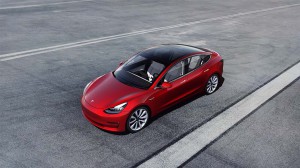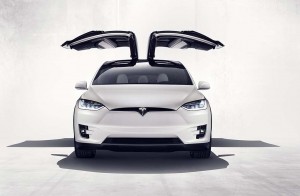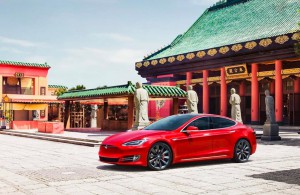One of the auto industry’s biggest questions was answered on Tuesday as Tesla announced that it had set records for both production and deliveries during the second quarter of 2019.
The stronger-than-expected numbers sent the battery-carmaker’s shares surging in after-hours trading, even though investors had already factored in the likelihood it would be a good, if not necessarily great, quarter for Tesla.
All told, Tesla produced 87,048 vehicles, including the original Models S and X, as well as the newer Model 3, and it delivered 95,200, helping clear out a backlog of products that it had built up during a painfully weak first quarter. The question is whether the company can not only make the aggressive target for the full year set by CEO Elon Musk but simply maintain its momentum in Q3 what with federal tax credits on its products having been halved again on July 1, to a maximum of just $1,875.
The automaker held out hope for the July-to-September quarter, however, noting in a statement that, “Orders generated during the quarter exceeded our deliveries, thus we are entering Q3 with an increase in our order backlog. We believe we are well positioned to continue growing total production and deliveries in Q3.”
(Latest Tesla Exec Departure Lands at Lucid Motors)
There are still some unanswered questions, including how much revenue the carmaker pulled in during the most recent quarter. Its previous record for sales, deliveries and revenues came during the final three months of 2019 when it generated earnings of $139 million on sales of 90,966 cars.
But several significant things have occurred since the end of 2018. For one thing, the $7,500 in federal credits offered to Tesla buyers last year dropped to $3,750 on Jan. 1. (The credits will be eliminated entirely on Jan. 1, 2020.) To prop up demand, Tesla cut its prices at the beginning of this year and has been reported to have engaged in significant discounting for the first time, according to various analysts and industry tracking services.
That could result in earnings that don’t come close to what Tesla generated during the final months of 2018, at the time marking the first time it delivered consecutive quarterly profits. Whether there will even be a profit this time is uncertain, CEO Musk sending mixed signals in recent months.
(Tesla stock rebounds, but questions remain about production)
“Delivery numbers are important, but we need to see the tea leaves look good for the second half,” Dan Ives, an analyst with Wedbush Securities, told CNBC. Tesla’s production target for the year is “still an Everest task, especially with competition coming at them from all angles. The real question is going to be is this sustainable?”
The company has indicated it may take additional steps to offset the impact of the latest tax credit reduction. But it is also moving to reduce its own costs to offset the impact of future discounting.
Separately, it is taking steps it hopes will improve slipping demand for its older products. That includes the launch of longer-range models, the latest Model S delivering as much as 370 miles between charges.
That said, industry analysts warn that demand for the Models S and X could continue to slip in favor of the lower-priced – and lower margin – Model 3. Part of the problem is that the more expensive offerings haven’t undergone major design updates in quite some time. “Visually, it’s time for a bit of a reboot inside and out.” Said CNET’s Roadshow in a review of the 2019 Tesla Model S Long Range.
(Tesla Gets Tariff Exemption from Commerce Department)
A continued slowdown in demand for the older models could make it difficult to hit the sort of production numbers Musk has broadly hinted at for the full year, between 360,000 and 400,000. But the second quarter, by delivering a strong bounceback, does offer an indication that Tesla can flex some solid marketing muscle, when necessary.



